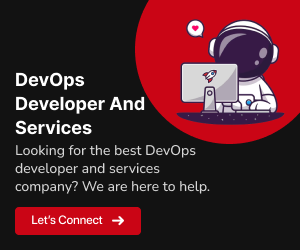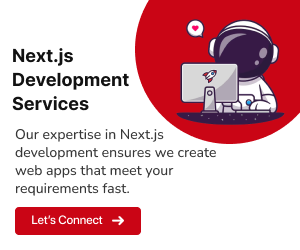Exploring Backend Development
In the vast landscape of web development, backend development stands as the powerhouse that drives the functionality of web applications. This section provides a comprehensive overview of the intricate world of backend development, shedding light on its pivotal role in crafting robust and dynamic digital experiences. Explore key considerations in ‘Dart vs Ionic’.
Unveiling the Backbone: Backend Development in Focus
Backend development involves the creation, optimization, and maintenance of the server side of web applications. It encompasses server logic, databases, APIs, and other elements that ensure the smooth functioning of the application. Delving into the intricacies of backend development reveals its profound impact on the performance, security, and scalability of web projects.
Why Backend Technology Matters
The choice of backend technology is a critical decision that significantly influences the trajectory of a web project. This section explores the importance of choosing the right backend technology, considering factors such as performance optimization, scalability, security protocols, and the long-term maintainability of the application. A deep understanding of these considerations is essential for developers and decision-makers navigating the complex landscape of backend development.
Dart: Empowering Backend Development
Embark on a deep dive into Dart, a programming language that transcends its roots in frontend development to become a formidable force in the realm of backend systems. Uncover the intricacies, capabilities, and best practices that make Dart an increasingly popular choice for crafting robust and efficient server-side applications.
Overview of Dart Programming Language
Begin your journey by understanding the fundamentals of Dart. Recognized for its simplicity and efficiency, Dart is an object-oriented language designed to enhance developer productivity. Explore its syntax, core concepts, and the principles that make Dart an expressive language for both frontend and backend development.
Features and Capabilities for Backend Development
Delve into the rich feature set of Dart tailored for backend development:
Strong Typing:
Dart’s strong typing ensures code integrity and reduces runtime errors.
Asynchronous Programming:
Leverage Dart’s asynchronous features for efficient non-blocking operations.
Standard Library:
Explore the comprehensive Dart standard library, offering powerful tools for backend tasks.
Concurrency Support:
Dart provides concurrency support for managing multiple tasks concurrently.
Garbage Collection:
Benefit from Dart’s automatic garbage collection, simplifying memory management.
Use Cases
Explore real-world applications of Dart in backend scenarios:
Building RESTful APIs:
Dart excels in creating RESTful APIs with concise and readable code.
Microservices:
Adopt Dart for developing scalable and modular microservices architectures.
Real-Time Applications:
Utilize Dart for building responsive and real-time applications with WebSocket support.
Data Processing:
Leverage Dart for efficient data processing tasks and analytics.
Best Practices
Unearth best practices guiding developers to leverage Dart effectively:
Code Organization:
Follow established patterns for organizing Dart code to enhance maintainability.
Modularization:
Embrace modularization for building scalable and extensible backend systems.
Architectural Patterns:
Explore proven architectural patterns for designing robust Dart-powered server-side projects.
Code Testing:
Implement comprehensive testing strategies to ensure the reliability of Dart backend code.
Documentation:
Prioritize thorough documentation for promoting collaboration and code understanding.
Explore the key features and advantages that make Flutter an ideal choice for cross-platform app development. Discover more in our blog: What Makes Flutter Ideal For Cross-Platform App Development?
Unveiling NodeJS for Backend:
Embark on a journey into NodeJS, a powerful runtime that fuels the backend of web applications. This section provides an extensive exploration of NodeJS, its asynchronous nature, event-driven architecture, and popular frameworks like Express.
NodeJS Overview:
Explore the fundamental aspects of NodeJS, a JavaScript runtime built on the V8 engine. NodeJS enables server-side development with its event-driven architecture and asynchronous I/O operations, making it highly efficient for building scalable and real-time applications.
Key points about NodeJS:
JavaScript Runtime:
NodeJS allows developers to use JavaScript for server-side scripting, extending the versatility of this language beyond the browser environment.
Asynchronous I/O:
Embrace the asynchronous and non-blocking nature of NodeJS, allowing for concurrent handling of requests and efficient utilization of resources.
Package Manager (npm):
Benefit from npm, the default package manager for NodeJS, which hosts a vast ecosystem of open-source libraries and tools.
Event-Driven Architecture:
Leverage the event-driven model to build scalable and performant applications. Events trigger callbacks, providing a responsive and non-blocking development experience.
Community Support:
Join a vibrant and active community of developers, contributing to the growth and evolution of NodeJS.
Asynchronous Nature and Event-Driven Architecture:
Delve into the unique characteristics of NodeJS, including its asynchronous, non-blocking nature and event-driven architecture. Understand how these features contribute to efficient and scalable backend development.
Asynchronous Nature:
NodeJS operates asynchronously, allowing it to handle multiple tasks concurrently without waiting for each to complete before moving on to the next. This asynchronous nature enhances the efficiency and responsiveness of backend operations, making NodeJS suitable for applications requiring real-time updates and high concurrency.
Event-Driven Architecture:
NodeJS follows an event-driven architecture, where actions or occurrences (events) trigger the execution of associated functions (callbacks). This model is particularly beneficial for handling numerous concurrent connections and responding to various events in a scalable manner. As events occur, NodeJS efficiently manages the flow of execution, contributing to the overall performance of the application.
Use Cases and Popular Frameworks (e.g., Express):
Explore the diverse use cases where NodeJS excels in backend development. Learn about popular frameworks like Express.js and how they enhance the capabilities of NodeJS, providing developers with robust tools for building scalable and performant server-side applications.
Scalable Web Applications:
NodeJS excels in building scalable web applications by efficiently managing concurrent connections. Its non-blocking I/O operations and event-driven architecture contribute to handling a large number of users simultaneously. This makes NodeJS a preferred choice for applications that demand scalability, such as social media platforms, e-commerce sites, and content delivery networks.
Real-time Applications:
NodeJS, with its event-driven architecture, is particularly well-suited for developing real-time applications. The ability to handle multiple events concurrently ensures quick responses, making NodeJS ideal for chat applications, online collaboration tools, and interactive gaming platforms. Explore how NodeJS facilitates seamless communication and real-time updates in applications where immediate user interaction is crucial.
Express.js Framework:
Explore the features and capabilities of Express.js, a popular NodeJS framework known for simplifying the development of robust and modular web applications.
Routing and Middleware
At the heart of Node.js web development lies routing and middleware, responsible for directing incoming requests to the appropriate handlers and executing code before and after request handling.
- Routing:
- Associates URLs with specific functions (handlers) that generate responses.
- Frameworks like Express.js simplify routing with methods like app.get() and app.post().
- Middleware:
- Functions that act as interceptors in the request-response cycle.
- Perform tasks like authentication, logging, data manipulation, and more.
- Can be applied globally or to specific routes.
- Routing:
Template Engines
Template engines create dynamic HTML content by merging data with static templates. Popular choices in Node.js include:
- Pug (formerly Jade): Concise syntax, whitespace-based indentation.
- EJS (Embedded JavaScript): Straightforward, allows embedding JavaScript code directly in templates.
- Handlebars: Logic-less, focuses on data presentation.
Middleware Functions
Middleware functions are functions with access to the request (req) and response (res) objects, as well as the next middleware function in the chain (next). They can:
- Execute code before a request is handled.
- Modify request and response objects.
- End the request-response cycle early.
- Pass control to the next middleware function in the chain.
RESTful API Development
Node.js excels in building RESTful APIs, which adhere to REST architectural principles:
- Resources are represented as URIs.
- HTTP methods (GET, POST, PUT, DELETE) map to CRUD operations.
- APIs are stateless and self-descriptive.
Frameworks like Express.js and Koa.js provide tools for efficient RESTful API development.
Comparative Analysis: Node.js vs. Dart
Choosing between Node.js and Dart for backend development involves understanding their strengths and weaknesses. Here’s a comparative analysis across key metrics:
Performance Metrics
Raw Speed:
Both platforms showcase strong performance.
Node.js:
Boasts impressive execution speed for interpreted languages due to the V8 JavaScript engine.
Dart:
Delivers native-like performance with AOT compilation, potentially surpassing Node.js in some scenarios.
Memory Footprint:
Node.js:
Generally requires more memory due to its dynamic nature and garbage collection overhead.
Dart:
Static typing and AOT compilation can lead to a smaller memory footprint.
Concurrency:
Both excel in handling concurrent requests through event-driven models.
Node.js:
Uses a single-threaded event loop within a process.
Dart:
Employs isolates that offer finer-grained control and better isolation.
Overall: Both platforms showcase strong performance, with Node.js excelling in raw speed and Dart potentially having the edge in native-like execution and memory efficiency.
Scalability
Horizontality:
Both readily scale by adding more servers.
Node.js:
Benefits from a vast ecosystem of microservices frameworks.
Dart:
Offers frameworks like Aqueduct and Phoenix with built-in microservices functionalities.
Vertical Scaling:
Node.js:
Applications might face limitations due to their single-threaded nature within a process.
Dart:
Isolates enable better vertical scaling by utilizing multiple CPU cores efficiently.
Overall: While both offer good horizontal scalability, Dart seems to have an advantage in vertical scaling due to its isolate-based architecture.
Explore the comparison between React Native and Flutter to make an informed decision for your cross-platform project. Discover more in our blog: React Native Vs Flutter: Which Cross-Platform Framework Should You Choose for Your Next Project?
Considerations for 2024: Choosing the Right Backend Technology
As the technology landscape evolves, making informed decisions for future-proof projects becomes crucial. Here’s an analysis of trends in backend development and what they mean for the future of Node.js and Dart:
Trends in Backend Development
Microservices & Serverless:
The shift towards smaller, independent services continues, with serverless computing gaining traction for cost-efficiency and scalability. Both Node.js and Dart offer robust frameworks for microservices development.
Edge Computing:
Processing data closer to users, at the network edge, is on the rise. Dart’s AOT compilation and strong serverless options position it well for this paradigm, while Node.js thrives in existing cloud environments.
Security & Data Privacy:
Stringent regulations and user expectations demand stronger security measures. Both platforms prioritize security, with Node.js having a larger pool of security libraries and Dart benefitting from its null-safety feature.
Focus on Developer Experience:
Frameworks with features like hot reload and intuitive syntax can streamline development. Dart shines in this aspect with its hot reload capability, while Node.js frameworks like NestJS prioritize developer ergonomics.
AI & Machine Learning Integration:
Backend systems are increasingly incorporating AI and ML functionalities. Both Node.js and Dart offer libraries and frameworks for integrating various AI/ML tools, but Node.js has a wider selection due to its larger ecosystem.
Future Prospects of Dart and Node.js
Node.js:
Its vast community, mature ecosystem, and established presence in cloud environments ensure ongoing relevance. However, challenges include potential memory footprint issues and single-threaded architecture limitations.
Dart:
Its rapid growth, clean syntax, native-like performance, and Google backing make it a compelling contender. However, its ecosystem, while maturing, might not yet match Node.js in sheer size and readily available resources.
Making Informed Decisions for Future-Proof Projects
Choosing the right backend technology depends on your project’s specific needs and priorities. Consider these factors:
Project requirements:
Microservices and serverless architectures favor Dart’s AOT and serverless options, while Node.js excels in existing cloud environments. Edge computing might suit Dart’s performance, while AI/ML integration might benefit from Node.js’ larger selection of libraries.
Existing tech stack:
If your team is familiar with JavaScript and the Node.js ecosystem, switching to Dart might require additional learning effort.
Development speed and experience:
Dart’s hot reload can boost developer productivity, while Node.js frameworks like NestJS offer a smooth development experience.
Community and resources:
Node.js enjoys a larger community and more readily available resources, but Dart’s community is rapidly growing and its official backing provides strong support.
By carefully analyzing your project needs, future trends, and the strengths of each platform, you can make an informed decision and choose the backend technology that best supports your project’s long-term success.
Navigating the Backend Landscape: Choosing Between Dart and Node.js in 2024
As we conclude our exploration of backend technologies, the decision between Dart and Node.js for 2024 hinges on your project’s unique needs. Whether you prioritize Dart’s simplicity or Node.js’s proven scalability, making an informed choice will set the foundation for a robust and future-ready backend. Consider the trends, evaluate prospects, and embark on a journey that aligns your backend with the evolving landscape of web development.



















